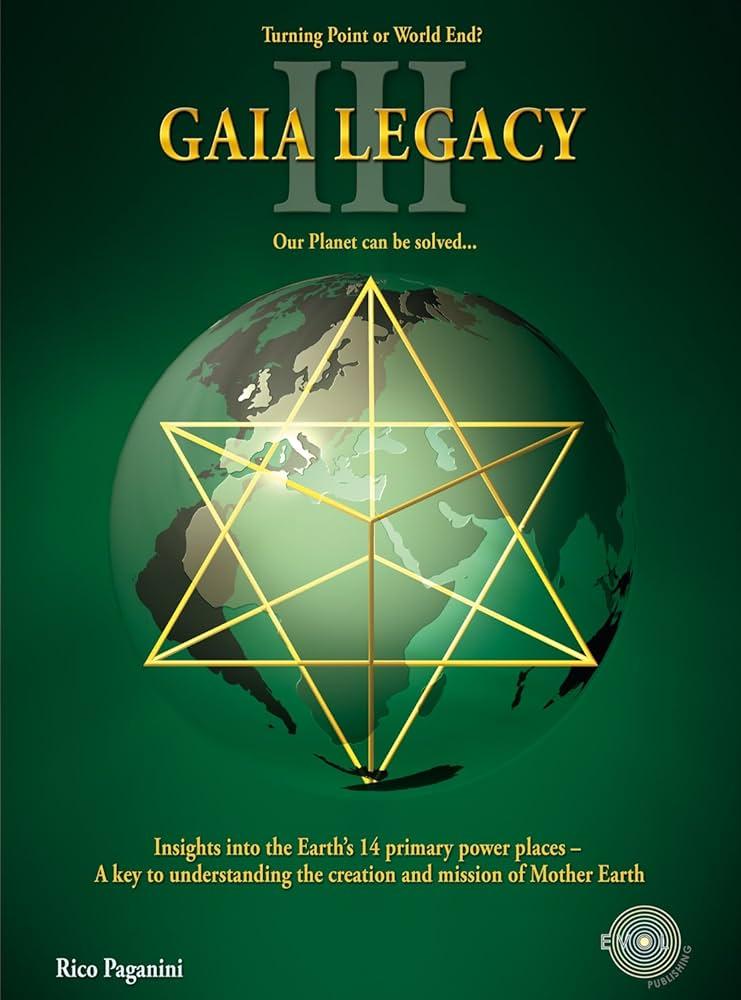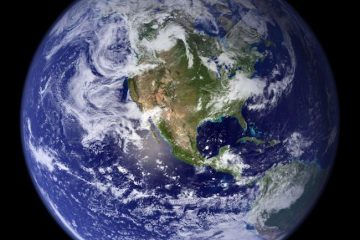Table of Contents
- Understanding the Core Principles of the Gaia Hypothesis
- How Earths Living Systems Interconnect and Sustain Balance
- Exploring the Scientific Evidence Supporting Gaia Theory
- Critiques and Controversies: Addressing the Skepticism
- Practical Implications: How Gaia Insights Can Guide Environmental Policies
- Q&A
- In Summary

Understanding the Core Principles of the Gaia Hypothesis
At its core, the Gaia Hypothesis proposes a fascinating vision of Earth as a self-regulating, interconnected system. This concept suggests that the planet functions akin to a living organism, where various biological, geological, and chemical processes work harmoniously to maintain conditions conducive to life. In this holistic view, Earth’s atmosphere, oceans, and land are all intricately linked, influencing and adjusting to changes in one another to sustain stability. This intricate balance is believed to have developed over billions of years, allowing for the persistence of life through dynamic feedback loops and natural regulatory mechanisms. James Lovelock and Lynn Margulis, the pioneering minds behind this hypothesis, theorized that living organisms interact with their inorganic surroundings to form a synergistic and self-regulating complex system.
- Feedback Loops: These are systems that help maintain equilibrium by reinforcing or counteracting changes.
- Homeostasis: The ability of Earth to self-regulate and maintain stable climate conditions.
- Biogeochemical Cycles: Processes like the carbon and nitrogen cycles which are essential for Earth’s sustainability.
The implications of the Gaia Hypothesis extend far beyond mere scientific curiosity. It challenges conventional views on the environment and underlines the significance of human impact on these delicate systems. Consider the role of algae in moderating atmospheric carbon dioxide, and thereby influencing global temperatures—a fine example of these self-regulating processes in action. This perspective encourages a stewardship approach to the planet, urging us to consider our part in these grand cycles and to act with a consciousness that respects the intricate balance of life. As we deepen our understanding of these principles, we unveil fresh insights into the interconnectedness of life and a call to harmonize with the natural world.

How Earths Living Systems Interconnect and Sustain Balance
The intricate web of life on Earth forms a stunning tapestry of interconnectedness, where every organism, element, and climatic event plays a part in maintaining the planet’s equilibrium. At the heart of this balance lies the concept that our planet functions like a self-regulating system, reminiscent of a living organism. Various components, whether biological, chemical, or physical, work synergistically to stabilize conditions conducive to life. For instance, forests act as the planet’s lungs, breathing in carbon dioxide and exhaling oxygen, while the ocean’s currents distribute heat, shaping climates across the globe.
- Biodiversity: Ecosystems rely on a wide range of species playing distinct roles, preventing any single species from tipping the scales of balance.
- Nutrient cycling: Decomposers like fungi and bacteria break down dead matter, recycling essential nutrients back into the soil for plant use.
- Climate regulation: Layers of vegetation and bodies of water absorb solar energy, helping to moderate temperature fluctuations.
| System Component | Role |
|---|---|
| Oceans | Regulate climate through heat distribution |
| Forests | Carbon sequestration and oxygen production |
| Soil | Nutrient storage and plant support |
Through the Gaia hypothesis lens, these systems operate not in silos but in harmony, as if guided by an overarching intelligence that ensures conditions remain conducive to life. This delicate balance is constantly under threat from human activities, such as deforestation and pollution, which disrupt these systems. By acknowledging and understanding these intricate connections, humanity can make informed decisions that align with the planet’s natural rhythms, promoting a harmonious coexistence with the Earth.
Exploring the Scientific Evidence Supporting Gaia Theory
The concept of Earth’s biosphere functioning as a single, self-regulating entity finds its roots in the 1970s with the Gaia Theory. While initially met with skepticism by the scientific community, substantial research over the decades has shed light on the interconnected processes that could validate this theory. For instance, studies have highlighted how various ecosystems maintain global temperatures, with forests playing pivotal roles through carbon sequestration and transpiration. Moreover, the intricate symbiosis between the Earth’s atmosphere and oceans further emphasizes the potential unity proposed by Gaia Theory, orchestrating a balance through the delicate dance of photosynthesis and respiration among diverse species.
Recent advancements in climate modeling have offered intriguing data supporting the notion of self-regulation within the planet. Simulation models demonstrate how certain thresholds in greenhouse gas concentrations can trigger feedback loops to stabilize temperatures. For instance, increased plant growth in response to heightened carbon dioxide levels is one proposed mechanism of such feedback. Additionally, data from polar ice cores reveal historic evidence of Earth’s capacity to restore equilibrium following climatic disruptions, mirroring the resilience proposed by Gaia Theory. Scientists continue to explore these models, investigating multiple interdependencies that sustain life through detailed climate projections.
To further illustrate the tenable facets of Gaia Theory, consider the following key relationships that reinforce the Earth as a living system:
- Biogeochemical Cycles: Cycles like nitrogen and phosphorus are crucial, linking soil, water, and atmosphere in a seamless exchange of nutrients.
- Oceanic and Atmospheric Interactions: The exchange of heat and moisture between these realms influences weather patterns, with oceans acting as climate regulators.
- Planetary Feedback Mechanics: Mechanisms such as volcanic ash contributing to global cooling demonstrate emergent properties that help stabilize Earth’s environment.
| Key Processes | Impact on Earth |
|---|---|
| Photosynthesis | Regulates oxygen and carbon balance |
| Carbon Sequestration | Mitigates climate change effects |
| Volcanic Activity | Alters atmospheric composition |

Critiques and Controversies: Addressing the Skepticism
The Gaia Hypothesis, although a fascinating conceptualization of Earth as a self-regulating system, has not been exempt from criticism and controversy. Critics often argue about its scientific validity, challenging the hypothesis’s foundations and its broader interpretations. One of the prominent critiques focuses on its lack of empirical evidence, as some skeptics point out that Gaia stretches beyond the reach of current scientific methodologies. This skepticism is not merely about Gaia’s concept being too broad but is rooted in its interpretative flexibility, making it challenging to assess through traditional scientific frameworks.
To address these critiques, it’s crucial to understand the diverse perspectives within the scientific community. Some suggest that the hypothesis is better categorized as a metaphor rather than a literal theory. Critics argue that the assumption of Earth behaving like a single organism risks oversimplifying complex interactions among ecological systems. Additionally, scientists caution against interpreting Gaia as teleological – implying Earth evolves with intent, which contradicts the non-intentional nature of evolutionary processes. Thus, while Gaia offers an intuitive framework for understanding interconnectedness, its practical applications remain a subject of debate among experts.
The controversies surrounding the Gaia Hypothesis have sparked discussions about how scientific hypotheses are validated and accepted. Proponents advocate for its inclusion within broader environmental and ecological research, suggesting that it encourages critical thinking about planetary health and sustainability. However, opponents maintain that for Gaia to gain broader acceptance, it needs to be grounded in reproducible scientific data. To summarize the contentious points, here’s a table outlining key arguments:
| Critiques | Responses |
|---|---|
| Insufficient empirical evidence | Potential for new methodologies |
| Overly metaphorical | Encourages holistic perspectives |
| Misinterpretation as teleological | Clarification of scientific intent |

Practical Implications: How Gaia Insights Can Guide Environmental Policies
The Gaia Hypothesis offers a unique lens through which we can assess and shape environmental policies. By viewing the Earth as a self-regulating system, policymakers can develop strategies that prioritize planetary health and sustainability. This perspective encourages a holistic approach, integrating scientific, ecological, and social aspects to ensure harmony with the biosphere. It suggests that policy measures need to be adaptive and robust, capable of responding to the dynamic interactions within Earth’s systems, like climate patterns and biodiversity changes.
In practical terms, adopting insights from Gaia into policy-making fosters a more resilient approach to environmental challenges. Governments can implement adaptive management strategies that are reactive to real-time environmental feedback. Such strategies include:
- Dynamic Climate Action: Implementing policies that evolve with new climate data.
- Integrated Biodiversity Conservation: Protecting ecosystems in ways that sustain their interconnected roles.
- Resource Management: Regulating the use of natural resources to maintain ecological balance.
Data-driven decisions are paramount in translating Gaia’s insights into actionable policies. The use of environmental indicators and metrics can be guided by Gaia’s principles to evaluate sustainability progress effectively. The table below illustrates how different sectors can incorporate Gaia-centric metrics:
| Sector | Gaia Metric | Purpose |
|---|---|---|
| Energy | Carbon Footprint | Reduce emissions and promote renewables. |
| Agriculture | Biodiversity Index | Enhance eco-friendly farming practices. |
| Urban Development | Green Space Ratio | Ensure sustainable urban growth. |



0 Comments